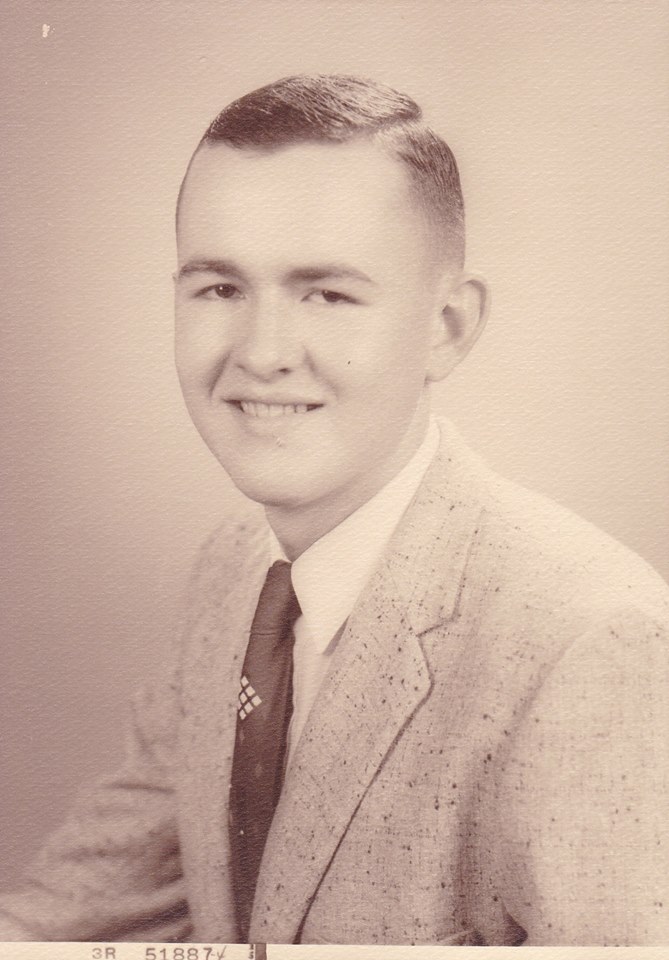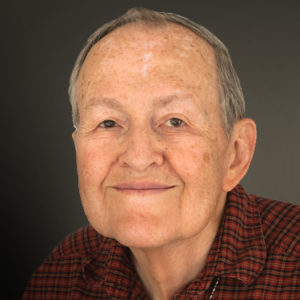Progress in Diabetes Management
Richard Vaughn has been living with type 1 diabetes for over 70 years and has shared his perspectives and insight with the diabetes community through Facebook posts and articles. He has offered to share some of his writing with our CWD community. This post is about the progress Richard has seen in diabetes management since his diagnosis.

My blood sugar was much too high from my diagnosis in 1945 until the 1980’s when I read about eating a lower carb diet. I did not know about carbs being part of the equation prior to that time. I could only test my urine to get some idea of my blood sugar level. Of course urine sugar does not necessarily correlate well at all with the blood sugar level at any given time. I did not know that though. I always tested my urine before eating, and limited my portion sizes and types of food accordingly.
Through the years I had learned that certain foods were not good for me. I could usually feel my highs and lows. (Much later on I discovered the highs I felt were like 250, or greater, and the lows were actually in the low 100’s.) I knew that too much fruit, pasta, bread and the desserts Mother made for me made me feel high if I ate big portions. I limited these portions so I could feel better. I knew nothing about carbs, but this was still a very crude form of carb control. I am sure that it helped during my teen years, and until I learned what an important role carb counting could play in the 1980’s. I never was more than 5 pounds overweight until the 1990’s. Weight was not a problem. I did not keep a log until I started carb counting. No doctor ever suggested that I keep a log, or limit my portion sizes on certain foods.
My wife and I moved to different locations several times during our early years. I had an MS degree, but not a PhD. To get tenure for teaching at a four year college a PhD was required. I was a full-time teacher at two four year colleges in the south, but I was allowed to teach only two years at each of them because I did not have a PhD.
We moved from Bridgewater, VA to Wingate, NC then to Richmond, VA and finally to Kingston, NY between 1964 and 1970. Every time we moved I looked for a new doctor, but I never found one that I especially liked. They were OK for diagnosing and writing prescriptions, but none of them knew much about diabetes. Either knowledge about diabetes progressed very slowly prior to 1980, or the doctors I saw were not keeping up with any advancements being made, and so I learned so little during all those years.
While we were living in Richmond, Virginia I found a specialist in diabetes listed in the yellow pages. I do not remember if he was an endocrinologist, but I do not think he was. It was 1970, and there may not have been endos at that time, at least not in the areas where I lived. I was very excited about this diabetes expert, and I made an appointment. His office was very crowded, and patients were spending, on the average, about 15 minutes with him. He saw me for the first time, and looked at my blood test result that his lab technician had performed on me when I first arrived at his office. He frowned and said the result was very high. I do not remember the level now. He spent so little time with me, even though it was my first visit. He gave me a book about diabetes that had been written about 20 years earlier. I am almost certain it was written in the early 1950’s. I do not remember the author or title of the book. He told me to pay particular attention to a certain page. That was a very strange doctor visit, very short and not at all informative. I was very disappointed.
I liked my previous GPs better than this so-called expert. I went to my car and immediately turned to the page he felt was so important. There was a chart on that page. In the leftmost column there was a list of ages at time of diagnosis, and in the adjacent column there was a prediction of age at time of death. According to that chart I was supposed to die in my late 40’s. I was 30 at that time so this suggested I had less than 20 years to live. I was terribly depressed!!!!! I went home and showed Anita. She hugged me, and gave me the comfort I desperately needed, but that chart nagged me terribly for many years after that day.
Anita and I discussed the office visit, the doctor, and the book. We decided I would not see the doctor again. We threw the book in the trash can. We knew that I had no complications, and I felt good even though I had high blood sugar almost all the time. We wanted to believe that I was an exceptional individual, and the statistics in that book did not apply to me.
Actually that did turn out to be the case, but we did not know that at the time. It was merely wishful thinking.
We moved to Kingston, NY in August of 1970. I had to go that far to find a college where I could get tenure and advancement in rank without a PhD. Only an MS degree was required in the community college system of NY state. We were very impressed with the job I had there. The fringe benefits were fantastic. I looked for a doctor, and found a GP with a heavy German accent. He was the best doctor I had had at that time. He knew much about diabetes, and he spent as much as 30 minutes with me on each visit. He tested my blood himself, while I watched. It was high but with his instructions I learned a little about carbs, and certain things I should eat in very limited portions. I followed his advice, and before he was in semi-retirement in the late 1970’s I had the best control I had ever had. My urine sugar still showed high much of the time, but I also had frequent lows. I began feeling very high in the upper 100’s whereas I had previously felt good at that level. It was extreme highs well over 200 that had made me feel high and, somewhat sick prior to that time.
In 1977 I knew that my doctor was about to move out of the area, and I needed another doctor. A neighbor recommended a new doctor who had just opened up his practice. He was from Thailand, and had a heavy accent. He was a specialist in internal medicine. His office was in the basement level of the Kingston hospital. He was in charge of the dialysis department at the hospital. He spent a lot of time with me on my first visit. He obviously knew very much about diabetes. I was so impressed, and I thanked my neighbor for recommending him. Dr. B. was the best doctor I had ever had, and he is still one of my doctors today. He is only a one year younger than me, and may retire at any time. He has helped me so much. He has had many diabetic patients, and they talked about him in the waiting room. Everybody liked Dr.B.
In the mid 1980s I saw an unusual looking instrument on a shelf at my drugstore. The word ‘diabetes’ appeared on the packaging. It was an instrument for testing blood sugar at home. It was an Accu Chek meter, an early model. It was much bigger and more cumbersome to operate than today’s meters. This was the first time I saw numbers indicating my blood sugar levels. It took a much longer time to produce produce a number. Almost every time I used the meter, it showed me a high number. Many times it was over 200, and sometimes in the very high 200’s.
I did not trust or like this crazy meter! It could not possibly be correct! I felt good, how could all these highs be correct? This had to be a defective meter. But no, it was not defective. I realized for the first time that I had been running very high blood sugar for 35 years. Dr. B. confirmed my suspicions, and we talked at length about it. What a revelation!!! Why hadn’t I developed terrible diabetic complications, and DKA after 35 years of high blood sugar?
Dr. B. could not answer that question, but he did tell me he had other patients who had diabetes for a long time, and many of them were on dialysis or had heart, or eye problems. In the early 1980’s I started keeping logs of my BG levels, insulin dosages and number of carbs eaten. It was a very new experience for me, and I enjoyed making out those logs, and watching my control gradually improve. I was on Humulin N and R insulins at the time I first saw Dr. B. I stayed with those insulins for quite some time. I had thrown my old glass syringe away, and was using disposable syringes. They were great. No more boiling the glass syringe and needles every morning in order to sterilize them for repeated use.
A1c testing was available in 1976. Dr. B. started giving his diabetes patients A1C testing in 1980. My first A1c was higher than he wanted. I kept on plugging away, and kept improving, but it was still too high. Dr. B. asked me to consider going to the Joslin Clinic in Boston for diabetes treatment. I was doing so much better, and I kept on improving, so I did not want to go to Boston. Later on he asked me to consider using an insulin pump. Again I refused, because my A1c was getting better and better. He saw room for improvement, and wanted me to pump. He never pressed me to make changes if he saw I was opposed.
Now I wish that he had insisted that I use a pump back then. (I know people who used a pump in the early 1980’s.) I started using vials of Humalog separately from my NPH, and I had the best control ever. I had been using an NPH and Humalog mix prior to that time. Dr. B. had hesitated letting me use the vials of Humalog because he knew I had hypos rather frequently.
I had been taken to the ER once during the 1980’s when Anita was not able to bring me out of my unconscious state. There were two or three other ambulance visits when the same thing occurred, but the shot they gave me each time worked so quickly. I immediately stood up and walked around. I was fully aware of my surroundings, and I told the guys I did not need to go to the hospital. They had me sign a paper that allowed me to stay at home. This has not happened since the 1980’s. My hypos are not nearly as bad or as frequent now.
A graph showing my A1Cs appears below for the years 1980-2015. It is obvious how much my diabetes management improved after I started using a glucometer and a fast acting insulin.

Published: August 12, 2019

Richard Vaughn was diagnosed with type 1 diabetes in 1945 at the age of six. He has lived with type 1 diabetes for 73 years, and does not have any of the serious diabetes complications. Communicating online, and in person, with other people with diabetes is one of his favorite things to do.